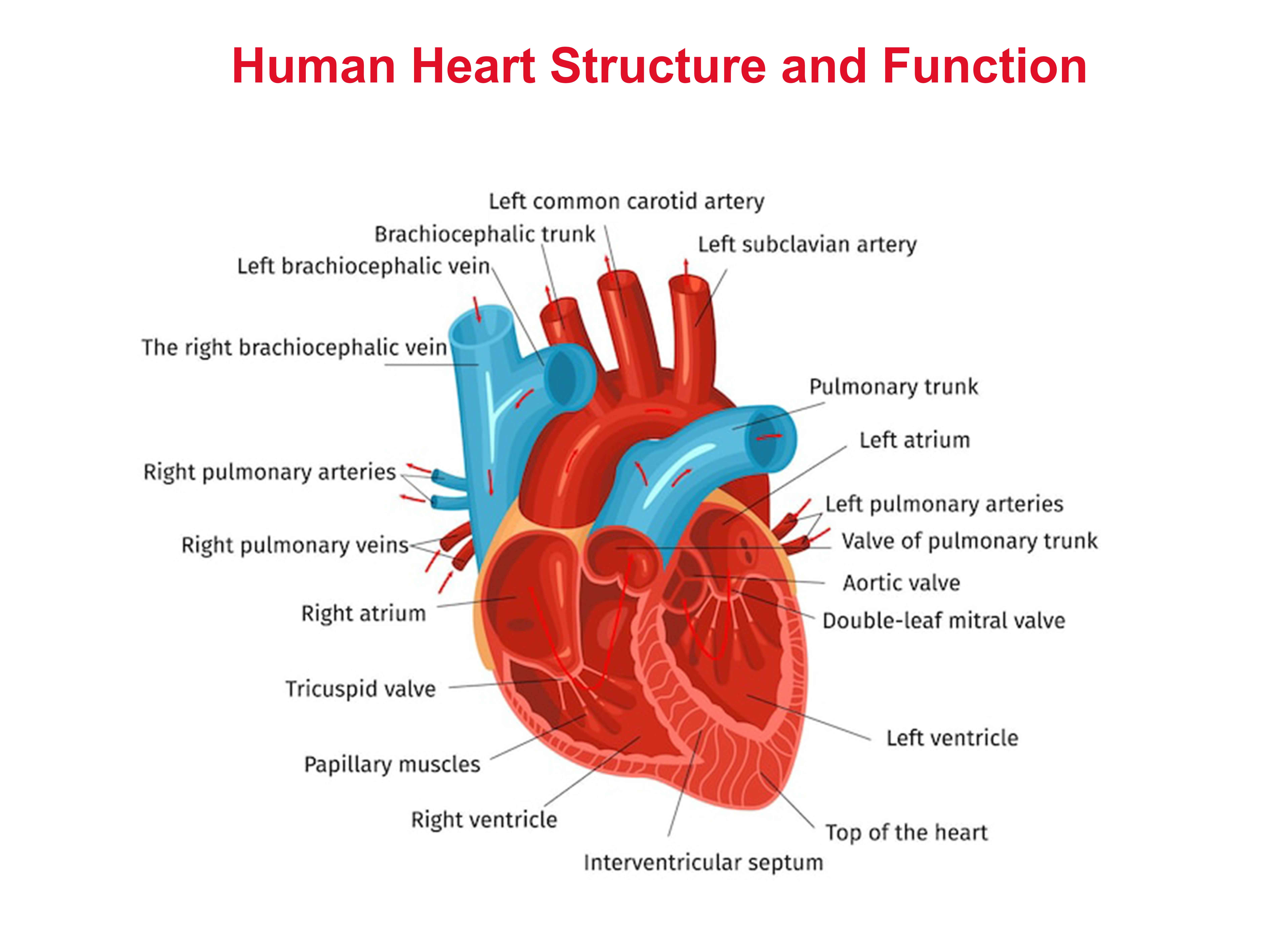Human Heart Structure and Circulatory System
Heart is a muscular pump that ceaselessly contracts and relaxes approximately 100,000 times a day to pump nearly 8000 liters daily. This organ measuring double the size of a human fist, pumps blood through a web of blood vessels that if stretched would measure more than 100,000 kilometers. This muscular pumps needs to function blood efficiently through arteries which carry oxygenated blood from the heart to various organs and return back the oxygen depleted blood to the lungs via the heart through blood vessels called veins. The system of blood vessels resembles a tree: The “trunk” – the main artery (aorta) – branches into large arteries, which lead to smaller and smaller vessels. The smallest arteries end in a network of tiny vessels known as the capillary network.
Heart and vascular system has various components that need to work in concert lest the heart fails. The components of the heart include:

- Heart Muscle – Myocardium
- Heart Chambers – 2 upper chambers – Left and right atria
- 2 lower chambers – left and right ventricles
- Heart Valves – Left sided valves – mitral and aortic valves
- Right sided valves – tricuspid and pulmonary valves
- Electrical system of the heart – ensures the various structures function in a coordinated fashion
- Blood vessels of the heart – coronary arteries are the vessels that supply blood to heart and coronary veins drain de-oxygenated blood back to right atrium.
- Systemic circulation – blood vessels that supply oxygenated various organs are arteries; those that bring back de-oxygenated blood are veins.
- Pulmonary circulation – blood vessels that carry de-oxygenated blood to the lungs are pulmonary arteries; those that bring oxygenated blood to the heart are pulmonary veins.
There isn’t only one blood circulatory system in the human body, but two, which are connected:
The systemic circulation provides organs, tissues and cells with blood so that they get oxygen and other vital substances.
The pulmonary circulation is where the fresh oxygen we breathe in enters the blood. At the same time, carbon dioxide is released from the blood.
There isn’t only one heart but has two distinct systems of the heart:
Right heart – Right atrium, right ventricle and pulmonary circulation
Left heart – Left atrium, left ventricle and systemic circulation
Functioning of the heart
Diastole or relaxation phase of the heart : During the relaxed, or diastolic, phase, the atria (upper chambers) fill with blood. The walls of the atria then contract, pushing the blood through the valves into the relaxed ventricles (lower chambers). The valves close tightly during contractions to prevent the blood from reversing direction.
Systolic or contraction phase of the heart : When the ventricles have filled, the systolic phase of the heart cycle occurs, in which the ventricle walls compress powerfully to expel the blood out of the heart and into the arteries.
How does the heart function in such a concerted fashion?
The entire sequence is masterminded by a group of cells in the wall of the right atrium called the sino-atrial (SA) node. This structure emits tiny electrical impulses that signal the heart chambers when to contract. Because the SA node determines
the heart’s pace and rhythm, it is sometimes called your natural pacemaker.
How the heart and circulatory system works?
For continuous circulation, the left and the right side of the heart must work together. Here are the series of steps that causes the blood to flow in the heart, lungs and body.
- The right atria receives deoxygenated blood from two large veins- the superior and inferior vena cava.
- When the atria contracts and the blood passes from the right atrium to the right ventricle through the tricuspid valve.
- When the ventricle fills, the tricuspid valve closes.
- Next, the ventricle contracts and pushes blood to the pulmonary artery through the pulmonary valve.
- The pulmonary artery carries the blood to the lungs where the blood gets oxygenated.
- This oxygenated blood enters the left atria of the heart through the pulmonary vein.
- Next, the left atria contracts and the blood flows from left atrium into your left ventricle through the open mitral valve.
- When the ventricle is full, the mitral valve shuts.
- Next, the ventricle contracts and oxygenated blood is passed to the aorta through which it is sent to various parts of the body.

